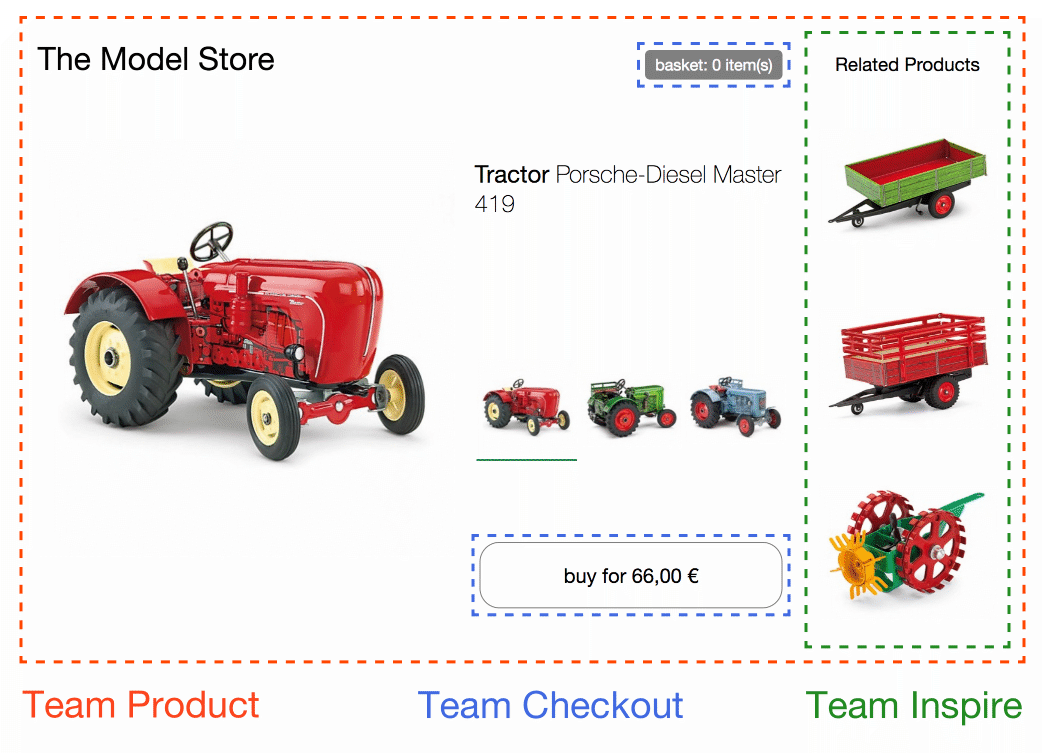JavaScript and the Microfrontend Revolution: Rethinking Web Architecture
Hi HaWkers, as you know, as web applications grow in complexity, the architecture that underpins them needs to evolve.
The concept of microfrontends arises as a response to this need, proposing a more modular division of the frontend. And of course JavaScript, the backbone of the web, is at the heart of this revolution.
The Rise of Microfrontends

Just as microservices sought to fragment the backend, providing more focused and scalable management, microfrontends bring this concept to the client side. The goal is to decompose the frontend into smaller, independent components, allowing different teams to work on different parts of an application without interfering with each other.
Benefits of the Microfrontend Approach
This approach offers several advantages:
- Code isolation: Each microfrontend is responsible for a specific part of the application, which means that bugs or failures in one will not affect the others.
- Parallel development: With multiple teams working on different microfrontends, development can occur in parallel, speeding up delivery.
- Scalability: As the application grows, new microfrontends can be easily added without changing existing ones.
- Better maintenance: By isolating functionality, it becomes easier to identify and resolve problems, as well as implement updates.

JavaScript and the Microfrontend Ecosystem
JavaScript plays a fundamental role in this architecture. Libraries and frameworks like React, Vue, and Angular support this approach, allowing developers to create well-defined, reusable microfrontends. The use of bundlers like Webpack and tools like Module Federation facilitate the integration of these components in a single application.
Componentization in Practice with React

One of the most popular frameworks for implementing the microfrontend approach is React. Its componentization capability makes it easy to create independent blocks of functionality. See a simple example of a React component:
import React from 'react';function Welcome(props) { return <h1>Hello, {props.name}</h1>;}export default Welcome;In this example, the Welcome component can be used in different parts of the application and even in other applications, demonstrating the power of code reuse.
Communication Between Microfrontends
A crucial issue in microfrontends is communication between components. Custom events and LocalStorage are two common approaches:
// Emitting a custom eventconst event = new CustomEvent('myEvent', { detail: { message: 'Hello HaWkers' },});window.dispatchEvent(event);// Listening to the custom eventwindow.addEventListener('myEvent', function (e) { console.log(e.detail.message);});This technique allows microfrontends to communicate with each other while maintaining independence.
Deployment Strategies

Given the fragmented nature of microfrontends, efficient deployment strategies are essential. Using continuous integration (CI) and continuous delivery (CD) allows each microfrontend to be updated independently of the others. Additionally, techniques such as blue-green deployment can be applied to minimize risks and ensure a smooth transition for end users.
Monitoring Tools
To ensure microfrontends are running optimally and detect issues quickly, monitoring tools like Sentry and LogRocket can be integrated. They allow a detailed view of component performance, making it easier to identify and correct problems.
Dynamic Component Loading
With microfrontends, it's often useful to load components on demand. JavaScript, with its promises and async functions, makes this incredibly simple:
async function loadComponent() { const module = await import('./MyComponent.js'); return module.default;}loadComponent().then(Component => { // Use the component here});This approach ensures that code is loaded and executed only when necessary, improving performance and efficiency.
Microfrontends and Web Components
Web Components, although not strictly a part of the microfrontend ecosystem, fit perfectly with it. They encapsulate styles, markup, and behavior in a reusable component:
class MyButton extends HTMLElement { connectedCallback() { this.innerHTML = `<button>Click Me!</button>`; }}customElements.define('my-button', MyButton);With the code above, you can use <my-button></my-button> anywhere in your HTML, taking advantage of the encapsulated nature of the Web Component.
Integration with State Managers
State managers like Redux or Pinia are valuable tools when dealing with microfrontends, especially when maintaining consistency between components:
// Simple example with Reduxconst store = createStore(myReducer);store.subscribe(() => { console.log(store.getState());});store.dispatch({ type: 'INCREMENT' });By integrating microfrontends with state managers, applications become more predictable and easier to debug.
Testing Microfrontends
Testability is one of the main advantages of microfrontends. Frameworks like Jest, Mocha or even vitest make it easier to write Unit and integration tests:
// Example using Jesttest('should render component', () => { const component = render(<MyComponent />); expect(component.getByText('Hello')).not.toBeNull();});Decomposition into smaller, more manageable components makes the testing process more effective and complete.
Challenges on the Horizon

Although promising, microfrontends are not without challenges. Communication between components, global state management, and ensuring a consistent user experience are issues that require attention. Furthermore, excessive fragmentation can lead to redundancies and increase complexity if not managed well.
Conclusion
It's HaWkers, as you can see, microfrontends represent a natural evolution of web architecture, reflecting the need for more modular and scalable applications. JavaScript once again proves to be the fundamental tool for this transformation, enabling developers to rethink and reshape the way we build the web.
If you want to understand more about JavaScript trends and its capabilities, check out my article on Augmented Reality with JavaScript: Creating Immersive Web Experiences!

